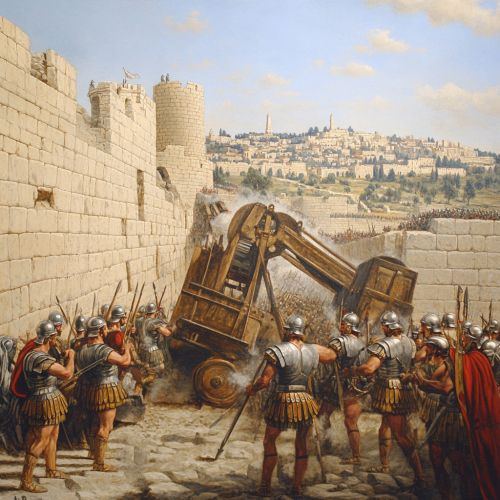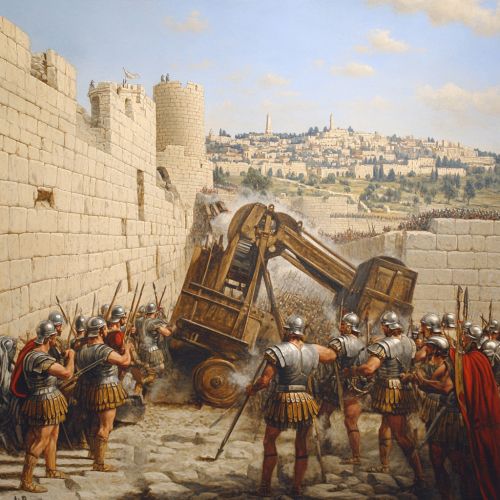Roman destruction of Jerusalem
Background
The Roman destruction of Jerusalem in 70 CE was a pivotal event in the history of the Jewish people and the Roman Empire. This event marked the culmination of the First Jewish-Roman War, which began in 66 CE. The destruction of Jerusalem and its Second Temple had profound religious, cultural, and political consequences, reshaping the landscape of Judaism and the broader region.
Prelude to the Destruction
Political and Social Context
The Roman Empire, under the rule of Emperor Nero, faced increasing unrest in the province of Judea. The Jewish population, discontent with Roman rule, was divided among various factions, including the Zealots, who advocated for armed rebellion, and more moderate groups seeking peaceful solutions. The tension reached a boiling point in 66 CE, leading to a full-scale revolt.
Initial Revolt
The initial stages of the revolt saw significant Jewish victories, including the capture of the Antonia Fortress and the expulsion of the Roman garrison from Jerusalem. However, internal divisions among the Jewish factions weakened their position. The Roman response was swift and brutal, with General Vespasian and his son Titus leading the campaign to crush the rebellion.
Siege of Jerusalem
Roman Military Strategy
The siege of Jerusalem began in early 70 CE, with Titus commanding the Roman legions. The Romans employed a combination of direct assaults, siege engines, and psychological warfare to break the city's defenses. The siege towers, battering rams, and ballistae were instrumental in breaching the city's walls.
Jewish Defense
The Jewish defenders, despite their internal conflicts, mounted a fierce resistance. The defenders utilized the city's natural fortifications and constructed additional barriers to impede the Roman advance. The Temple Mount and the Upper City were key strongholds in the defense strategy.


Destruction of the Second Temple
Breach and Final Assault
In August 70 CE, after months of relentless siege, the Romans breached the city's defenses. The final assault focused on the Second Temple, a symbol of Jewish identity and religious life. The temple was set ablaze, and its destruction marked the end of Jewish resistance in Jerusalem.
Consequences for Judaism
The destruction of the Second Temple had profound religious implications. The Temple rituals, central to Jewish worship, could no longer be performed. This led to a transformation in Jewish religious practice, with a shift towards Rabbinic Judaism and the establishment of synagogues as centers of worship and community life.
Aftermath
Roman Reprisals
Following the fall of Jerusalem, the Romans implemented harsh reprisals against the Jewish population. Many were killed, enslaved, or displaced. The Arch of Titus, erected in Rome, commemorates the Roman victory and the spoils taken from the temple, including the Menorah.
Diaspora and Jewish Resilience
The destruction of Jerusalem and the subsequent Bar Kokhba revolt in 132-135 CE led to the widespread Jewish diaspora. Despite these challenges, Jewish communities adapted and preserved their cultural and religious identity. The Mishnah and the Talmud, foundational texts of Rabbinic Judaism, were compiled during this period of dispersion.
Historical Significance
The Roman destruction of Jerusalem was a turning point in Jewish history. It marked the end of the Second Temple period and the beginning of a new era in Jewish life. The event also had lasting impacts on the Roman Empire, influencing its policies towards other rebellious provinces and shaping its approach to governance and military strategy.
